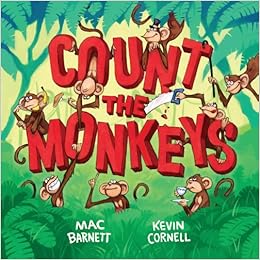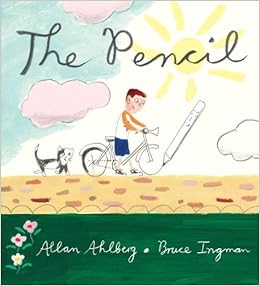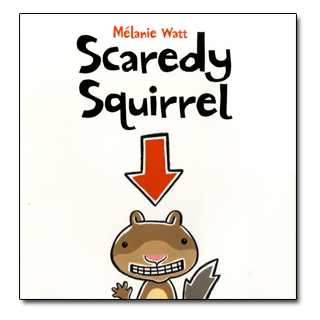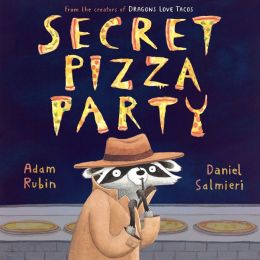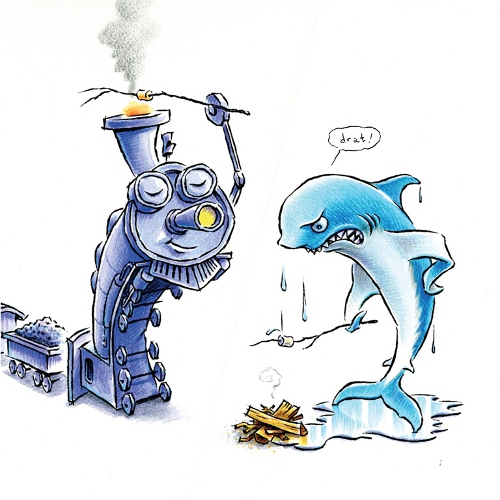BIG BEAR HUG
By
Nicholas Oldland
(Kids Can Press,
2009)
I’m not sure I would really want a bear hug. But this is the story of
one bear with an irrepressible urge to offer hugs. The illustrations are priceless as a
bug-eyed rabbit, a moose and a skunk encounter the loving bear. The story
becomes more amusing when Oldland informs us that “what this bear loved to hug
most were the trees.”
The tale takes another turn when the bear
comes across a lumberjack, intent on chopping down the biggest tree in the
forest. Grr! What will be the
bear’s natural reaction?
DAVID GOES TO SCHOOL
By
David Shannon
(Blue Sky Press,
1999)
Thoughts of a new school year can make
everyone nervous—students, parents, teachers, even principals. There are high
hopes. Yet sometimes hopes are dashed as soon as the rules are stated.
As a teacher and principal, I see David
every day. There's one in every class, usually more. He's impulsive, excitable,
a dreamer. Full of energy, he seems to be recognized more for his infractions
than his contributions. David is the type of student who requires us to look at
the classroom from a different vantage point. David is looking for fun and,
sadly, school can seem like anything but. David's need to express himself must
be channeled in a positive way so as not to squelch his eager mind.
GOODNIGHT,
GOODNIGHT, CONSTRUCTION SITE
Written
by Sherri Duskey Rinker
Illustrated
by Tom Lichtenheld
(Chronicle
Books, 2011)
This is a bedtime story for little ones
who pass the day digging and building in sandboxes with tough trucks that
create, demolish and rebound all to a soundtrack of animated whirrs and booms.
There is a time
when construction workers, both young and old, must call it a day and when even
the powerful vehicles must shut down for the night.
No doubt, this will be a popular read
night after night. I can envision parent and child whispering goodnight to each
truck before the parent provides the final tucks and bids the child,
“Shh...goodnight, _____, goodnight.” And,...lights out.
NOT A BOX
By
Antoinette Portis
(HarperCollins
Children's Books, 2007)
I love toys. When children walk into my
principal's office, they notice two things: (1) kids' books, and (2) toys. With
the right imagination, most anything can be a toy. The cardboard box is a true
classic, right up there with yo-yos, red wagons and Legos.
This picture book is an ode to the lowly
cardboard box, cleverly designed to resemble one. Inside, the unimaginative
narrator—an adult?—remains mystified as to why the young bunny is on, in or
near the box. The narrator’s questions and point of view are represented on
black and white pages. In between, we see the imaginative play of the bunny,
shown in bright colours. Play on, bunny!
THE PENCIL
Written
by Allan Ahlberg
Illustrated
by Bruce Ingman
(Candlewick
Press, 2008)
A pencil rests on a blank page before
discovering its ability to draw. Pencil draws a boy, but then the boy has a
request: a dog. Dog wants a cat. Naturally, a chase ensues. The story goes on
and on, with problem after problem popping up. (Just wait until pencil draws an
eraser!) Oh, such goofy fun!
PETE THE CAT: I
LOVE MY WHITE SHOES
Written
by Eric Litwin
Illustrated
by James Dean
(Harper, 2008)
Pete the Cat loves his brand new white shoes, adorning each of his paws.
For most cats, wearing shoes would not be a happy predicament, but Pete so
loves his white shoes that he sings a ditty about them.
For a roaming kitty, white doesn’t stay
white for long. The shoes change color as Pete meanders through such things as
a pile of strawberries. The whiteness is gone! Pete may not have expected this,
but rather than whine, cry or meow mournfully, Pete simply changes his tune a
tad and goes with it. The message is clear: have fun and be resilient.
(As a bonus, you can find a live telling
of the story on YouTube. It will help you get the tune down and maybe start you
on the road to superstardom.)
SCAREDY SQUIRREL
By
Mélanie Watt
(Kids
Can Press, 2006)
We get a sense of the main character
immediately upon opening the book. There, amid a pattern of acorns, is a
sticker: “WARNING! Scaredy Squirrel insists that everyone wash their
hands with antibacterial soap before reading this book.”
Scaredy Squirrel fears the unknown so he
spends all his time in the same tree, following the same ho-hum routine every day.
He has real fears of tarantulas, poison ivy, green Martians, killer bees, germs
and sharks. These things lurk just beyond the tree, right?
Because the fears are so great and so
imminent, Scaredy creates an emergency kit and several exit plans if, and only
if, escape is absolutely necessary. Naturally, the day comes when kit and plans
must be put into action. And, of course, nothing goes as planned.
SHARK VS. TRAIN
Written
by Chris Barton
Illustrated
by Tom Lichtenheld
(Little, Brown
and Company, 2010)
Under what circumstances would a shark
compete against a train? You only have to spend an hour with a couple of boys
and a box full of toys to see the possibilities. Indeed, that is where the
standoff begins in this book.
I love this clever, absurd book. It
celebrates boys’ imaginations and the shenanigans that can only come from free,
unstructured play. Shark and train compete in a variety of situations.
SPLAT THE CAT
By Rob
Scotton
(HarperCollins,
2008)
Why is Splat so anxious that he needs to
hide in bed? It is the morning of his first day at Cat School. Yes, this is a
wonderful book to share with young readers worried about the start of
kindergarten, a new school or simply a new school year. For many students (and
adults, both parents and teachers), there is excitement about school but there
are also the nagging What Ifs.
Splat’s Mom must get him out of bed and
off to school, no easy feat since the young feline puts up a strong resistance.
When he grabs his lunchbox, Splat sneaks Seymour, his pet mouse, inside. Best
not to face the first day alone. Just imagine what will happen when Splat’s
cat-mates discover the pet mouse! Author/Illustrator memorably chronicle’s the
first day of school.
YUCK, A LOVE
STORY
Written
by Don Gillmor
Illustrated
by Marie-Louise Gay
(Stoddart Kids,
2000)
The first two sentences of Gillmor’s text are perfect: “Austin Grouper
had a brown dog named Fresco, a best friend named Sternberg, and a red bicycle.
His life was full.” But the story does go on. Lo and behold, Austin’s world is
rocked when a family with a girl his age moves in next door. Amy.
Of course, Austin’s mom does the mother
thing, insisting he go over to greet the new neighbour. He forgoes hello and
immediately dazzles with his dinosaur knowledge. She is not impressed. As a
result, neither is he.
The title captures Austin’s simultaneous
feelings of repulsion and attraction to the new neighbor. Why is she
so...different? The author adds whimsical details, worthy of smiles if not
chuckles. On repeated reads, children will focus more on different parts of the
story. The details will pop.

